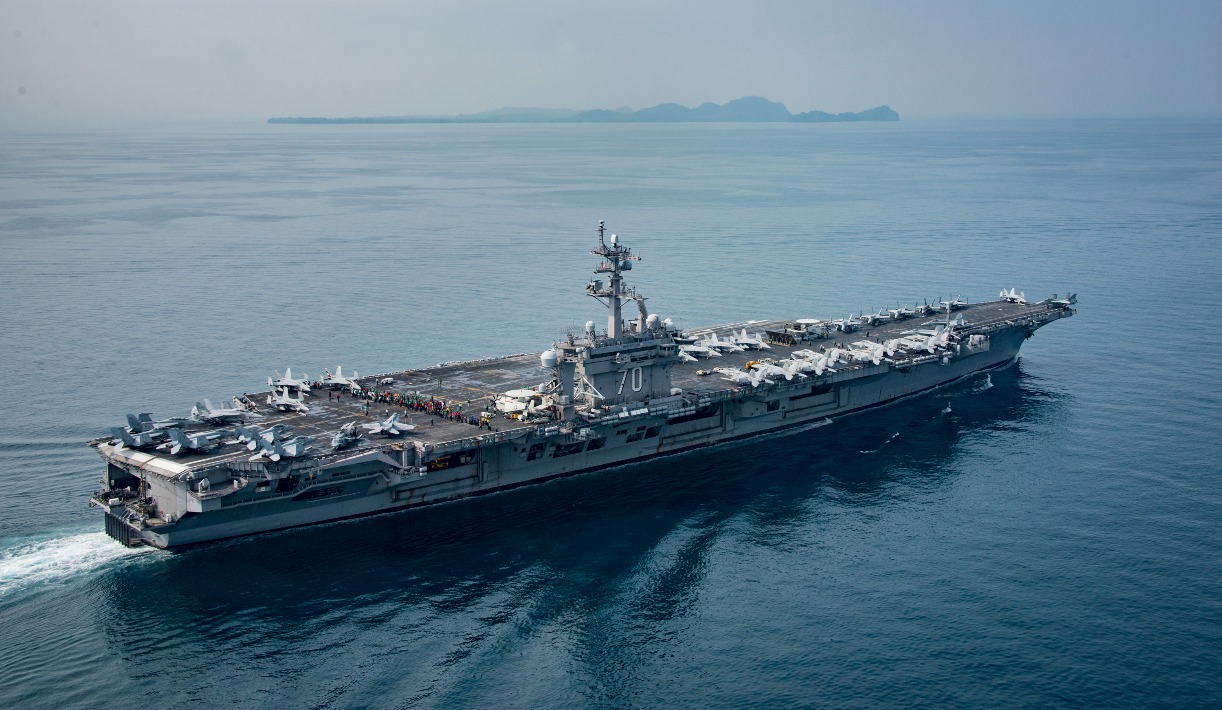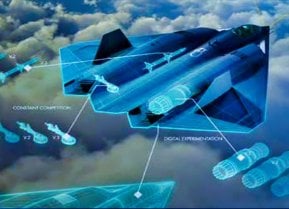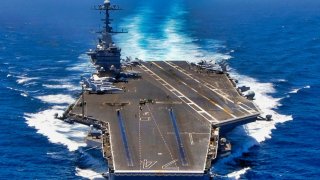U.S. Navy Aircraft Carriers Are Useless Against China
China has developed hypersonic weapons, cyberwarfare, and electronic warfare capabilities designed to neutralize U.S. military advantages like aircraft carriers.
Summary and Key Points: Mainstream military analysts in the West are mistaken if they think a potential Sino-American conflict will resemble the Pacific Theater of WWII. Modern warfare, particularly with China, involves grayzone operations and sophisticated anti-access/area-denial (A2/AD) systems that render traditional aircraft carriers ineffective.

-China has developed hypersonic weapons, cyberwarfare, and electronic warfare capabilities designed to neutralize U.S. military advantages.
-The U.S. must innovate with new technologies, such as space-based systems and hypersonic weapons, to counter China's A2/AD threat. Relying on aircraft carriers as the pinnacle of U.S. military power in a conflict with China is outdated and impractical.
Mainstream military analysts in the West are suffering a bout of historical amnesia. Many of them think that the coming conflict between the United States and China will be little more than a modern-day rerun of the Second World War’s Pacific Theater.
This could not be more wrong.
A potential Sino-American conflict is not World War II with Nimitz-class and Gerald R. Ford-class carriers. It is an entirely new style of warfare that combines a little bit of the old with much that is new.
Grayzone Operations
First, there is the prevalence of grayzone operations. This is what the Israelis have long referred to as the “war between the wars.” This is similar to another concept of unrestricted, or asymmetrical, warfare that the Chinese have long advocated for.
Combining both the kinetic and non-kinetic, and fusing together military and civilian functions into one potent threat, China has the capability to wage war in unconventional ways that complicate the American ability to conduct offensives. The new approach also serves to fundamentally alter perceptions in such a way that American leaders might not even recognize they are already at war.
Once the shooting begins and everyone recognizes that a war is underway, the U.S. Navy’s forces are the tip of the American spear in that fight. In this specific way, yes, a potential Sino-American war is akin to the Pacific Theater of World War II.
But that’s where the similarity ends.
Unlike in the Pacific Theater, American aircraft carriers will be useless, because China has spent the last 20 years arraying new military systems designed to fight U.S. flat tops.
The Tao of A2/AD
Today, China has flooded the Indo-Pacific with anti-access/area-denial (A2/AD) systems that can keep the bulk of America’s surface fleet over the horizon and can likely debilitate American air capabilities in the region.
China’s spearheading of hypersonic weapons technology has given Beijing’s forces a decisive edge over the Americans as well.
With these capabilities, China can – and will – deny the American military access to the region in a time of war.
Frankly, China understands that America’s aircraft carriers are less strategic platforms for power projection and more like a strategic burden. They are so complex and expensive, and they carry so many sailors and possess such a large air wing, that the loss of even one of these behemoths would deal a devastating psychic and strategic blow to the Americans from which Washington’s forces might not recover.
Even if they do recover, the loss of these flattops, given the Navy’s prioritization of carriers over all other systems, leaves American combat capabilities in the region much diminished.
The Navy recently blew through $13 billion to build its newest carrier, the USS Gerald R. Ford. It is spending hundreds of billions of tax dollars to construct multiple units of the new Ford class.
The Navy has seen similar fireside levels of spending on other surface ships, such as the Constellation-class guided-missile frigate, that are all unlikely to prove as useful in a war against China as their designers claim.
China Has Transformed the Battlefield. America Must Counter
Thanks to China’s massive military modernization program, their rocket, counterspace, cyberwarfare, and electronic warfare (EW) elements all operate in tandem. These forces can mass to repel any physical attacks the U.S. military initiates against the Chinese in a war.
Hypersonic weapons, drones, cyberwarfare, EW capabilities, and counterspace activities have all changed the face of war. They conspire to ensure that America’s perceived carrier advantage is completely negated before those boats can get close enough to make a difference on the battlefield.
So, no, the coming Sino-American conflict will not be WWII in a modern setting.
Innovate or Die
Back in WWII, the Americans were faster in adapting and perfecting what was at that time an innovative technology, the aircraft carrier, and using it to great effect against the Japanese.
For decades thereafter, in the Cold War and for the first couple of decades in the post-Cold War era, carriers continued to reign supreme – indeed, they went mostly unchallenged. But making these platforms the face of the next war in the Pacific is irresponsible.
A better application of resources would be to learn from America’s predecessors in WWII. Embrace and streamline entirely new military technologies to gain the edge.
If China has perfected A2/AD capabilities, the Americans should produce great numbers of space-based systems – including the X-37B spaceplane – that can overcome the Chinese A2/AD threat.
The U.S. military should rededicate itself to building hypersonic weapons at a faster and more reliable clip than its enemies. America should then use those weapons to decimate the launch sites where the Chinese A2/AD systems are based.
Unless the U.S. military develops methods to utterly degrade and destroy China’s A2/AD encampments, then any war with China in the Pacific will go badly for the Americans.
Stop talking about the aircraft carrier like it is the pinnacle of U.S. military capabilities in any fight with China.
It is not.
In fact, it will be a wasting asset until the Americans develop the systems necessary to overcome A2/AD – and those systems don’t include the aircraft carrier.
About the Author:
Brandon J. Weichert, a National Interest national security analyst, is a former Congressional staffer and geopolitical analyst who is a contributor at The Washington Times, the Asia Times, and The-Pipeline.
All images are Creative Commons or Shutterstock.


